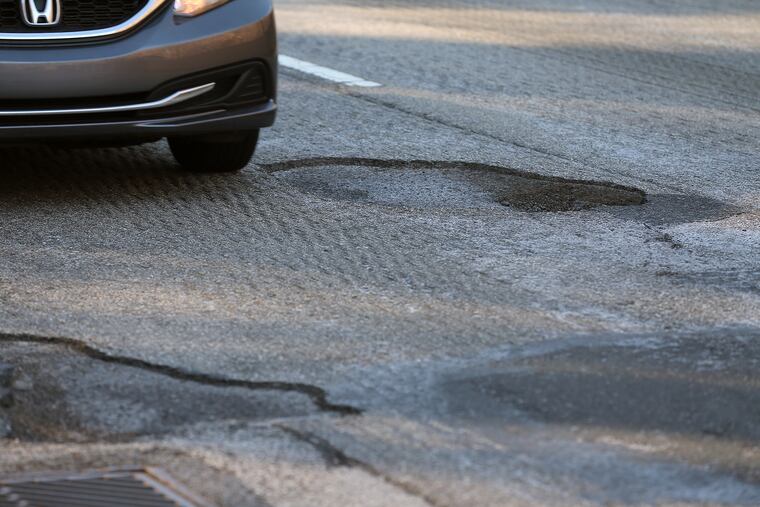52,247 potholes filled and counting in Philadelphia this year | Opinion
Years of underinvestment, coupled with this year's long and wet winter have exacerbated the city's pothole problems. The only way to fix this for the future is to invest in a robust paving plan.

Philadelphians, we hear you. All of your tweets, calls, emails, and 311 requests about potholes have not gone unanswered. In fact, we are on track to fill 18,000 more potholes this year than last year.
Our current tally is more than 52,247 potholes filled, and that is without the help of Domino's.
But potholes are a symptom of a much bigger problem — that our streets have suffered from years of underinvestment. When city streets are not paved on a normal schedule, potholes form, causing issues for everyone who uses our roadways.
They get in the way of drivers going to work or taking their kids to school, they are a menace to bicyclists using our bike lanes, and they are not a welcome sight to visitors of our great city.
This administration is serious about fixing the pothole problem. That is why we are gradually increasing the capital repaving budget by 65 percent over the next six years. Funds for paving will grow from $20 million in fiscal year 2017 to $33 million in fiscal year 2024.
To put it another way, over the next six years, $178 million of city tax-supported funds are budgeted for repaving.
Because of this investment, our city now has a second paving crew in operation for the first time in over a decade. Each paving crew is made up of 34 workers, including asphalt rakers, heavy equipment operators, laborers, and inspectors. Within the next five years, the Streets Department will add a third paving crew, expanding capacity even more.
With increased funding, the city can resurface more streets, while also leveraging state and federal grants for additional road maintenance efforts. Many Philadelphians do not realize that many thoroughfares in the city are owned and maintained by PennDOT: Broad Street, Snyder Avenue, Frankford Avenue, Ridge Avenue, 52nd Street and Erie Avenue to name a few.
Years of underinvestment, coupled with this year's long and wet winter have exacerbated the city's pothole problems. The only way to fix this for the future is to invest in a robust paving plan. We are doing just that.
As many Philadelphians have experienced, paving a street does not happen overnight. The process from initial milling to complete resurfacing takes between three to five weeks on average.
The first step of the process is called milling, where the old roadway is removed. Next, manholes are inspected. During this step, the Streets Department works with utility companies to address underground issues and prevent future diggings. They also reset manhole covers.
After that, paving can start where new asphalt is laid, restoring the street to good condition. Finally, when paving is complete, the road is striped.
If your neighborhood is on the repaving list, we ask for your patience. We know it's tough to navigate a street that is undergoing the paving process.
In the meantime, if you see a pothole, you can call 311, tweet to @Philly311 or visit phila.gov/311 to report it.
While we admit that Philly may never be completely pothole free, we are working on it.
Mike Carroll is deputy managing director of the Philadelphia Office of Transportation and Infrastructure Systems (oTIS). Carlton Williams is commissioner of the Streets Department.